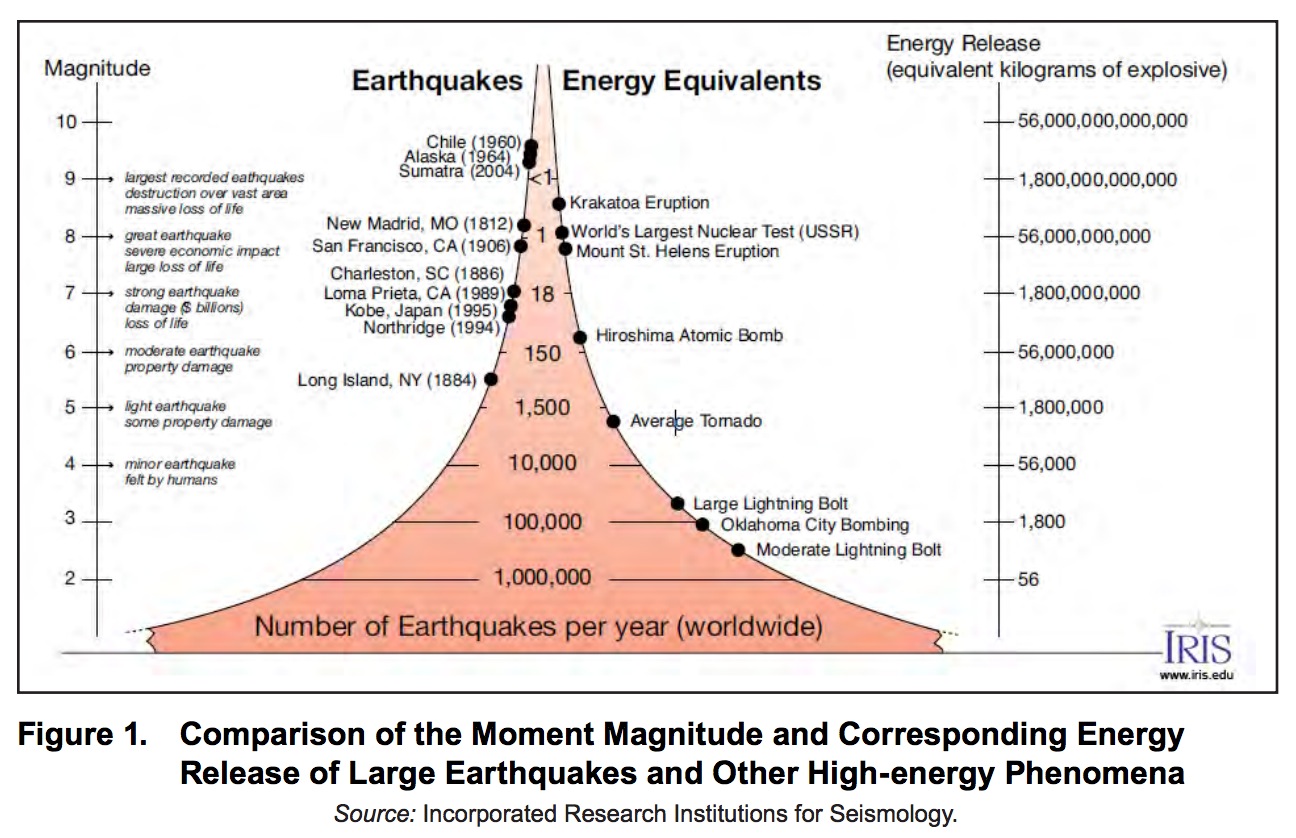MINETA TRANSPORTATION INSTITUTE
Executive Summary
Earthquakes are a reality in both Japan and California. Seismically active areas lie near and under high-speed rail systems in Japan and along the proposed route for the California High-Speed Rail Authority’s (CHSRA) developing system. Japanese high-speed lines have withstood significant earthquakes without a single loss of life. Their experiences are instructive for California as it develops its system.
The report begins with an explanation of seismology and the study of earthquakes in various parts of the world. It provides a brief explanation of plate tectonics and the types of seismic waves. Next, it describes how earthquake monitoring technology has developed, and how early warning of approaching earthquakes is now possible using algorithms to evaluate data collected by seismometers and accelerometers.
The report then describes the history of the threefold aspects of seismic mitigation on the East Japan Railway (JR East), beginning with a study of the development of Japan’s earthquake early warning system. It next reviews the recent seismic history of Japan and the JR East infrastructure retrofits that followed each significant earthquake from 1978 through 2011.
Finally, it evaluates the planning and training involved in preparing JR East staff to assist passengers and staff in time of disaster. Next, it describes the Great East Japan Earthquake on March 11, 2011, and its impact on JR East facilities. What began as a M 9.0 earthquake off the coast of Tohoku became a tsunami disaster because the earthquake was under the ocean. It disturbed the seabed and generated a tsunami wave that rose to 12 meters (39 feet), devastating many cities along the coast. The “triple disaster” was created when the tsunami wave overwhelmed the tsunami walls and flooded the nuclear power plant at Fukushima.
The impact of the triple disaster on the JR East infrastructure provides many lessons about the value of various types of mitigation for the CHSRA system. The next section evaluates the value of earthquake early warning systems, including the systems currently in use in California and their possible application to high-speed rail facilities. Real-time earthquake engineering (RTEE) and real-time seismology (RTS) are described, and their relationship to a high-speed rail earthquake early warning system is explained. Public policy and government activities in the development of warning systems are also discussed.
Seismic retrofitting of rail infrastructure in Japan is evaluated for its applicability to the California high-speed rail system. Lessons are drawn regarding the types of retrofitting that may be beneficial and the differences in California’s geology that may drive the development of different engineering solutions for seismic threats.
The JR East earthquake early warning system stops the train, prompting a response by the passengers and staff. Staff training in Japan was largely responsible for the subsequent lifesaving activities that moved passengers and staff out of harm’s way. The types of training and exercise activities used in Japan are evaluated for applicability to California rail systems.
The report concludes that the lessons learned from the experiences of JR East in the 2011 Great East Japan Earthquake can inform decisions to be made by the CHSRA as it develops its route, designs its infrastructure and selects its train sets. The training lessons are equally valuable.
The report uses literature review, case study, and interviews with researchers and practitioners as approaches to understanding the history and current state of the EEW development and application to infrastructure, including high-speed rail. Articles indexed in scholarly databases and newspaper archives formed the basis for much of the literature review. In addition, the JR East system provided reports rarely available to Western researchers on EEW system performance, seismic resistance/resilience research related to columns, piers and bridges, and staff training. The authors conducted extensive EEW research through the Berkeley Seismic Laboratory, and structural engineering research on seismic resistance through private engineering activities, both of which are documented in sections of this report.
About the Mineta Transportation Institute
transweb.sjsu.edu
The Mineta Transportation Institute (MTI) conducts research, education, and information and technology transfer, focusing on multimodal surface transportation policy and management issues. It was established by Congress in 1991 as part of the Intermodal Surface Transportation Efficiency Act (ISTEA) and was reauthorized under TEA-21 and again under SAFETEA-LU. The Institute is funded by Congress through the US Department of Transportation’s (DOT) Research and Innovative Technology Administration, by the California Legislature through the Department of Transportation (Caltrans), and by other public and private grants and donations, including grants from the US Department of Homeland Security.
Tags: CA, California, Earthquake, High Speed Rail, HSR, Japan, Mineta Transportation Institute, Resilience, safety







 RSS Feed
RSS Feed
How long would it take to stop the train after the warning message was received. How would they get a large number of people down from an elevated guideway or from a long tunnel – in the dark? How many “helpers” would be needed to do an emergency evacuation?